Year 2 Single Digit Subtraction Worksheets
Choose the Numbers (A)
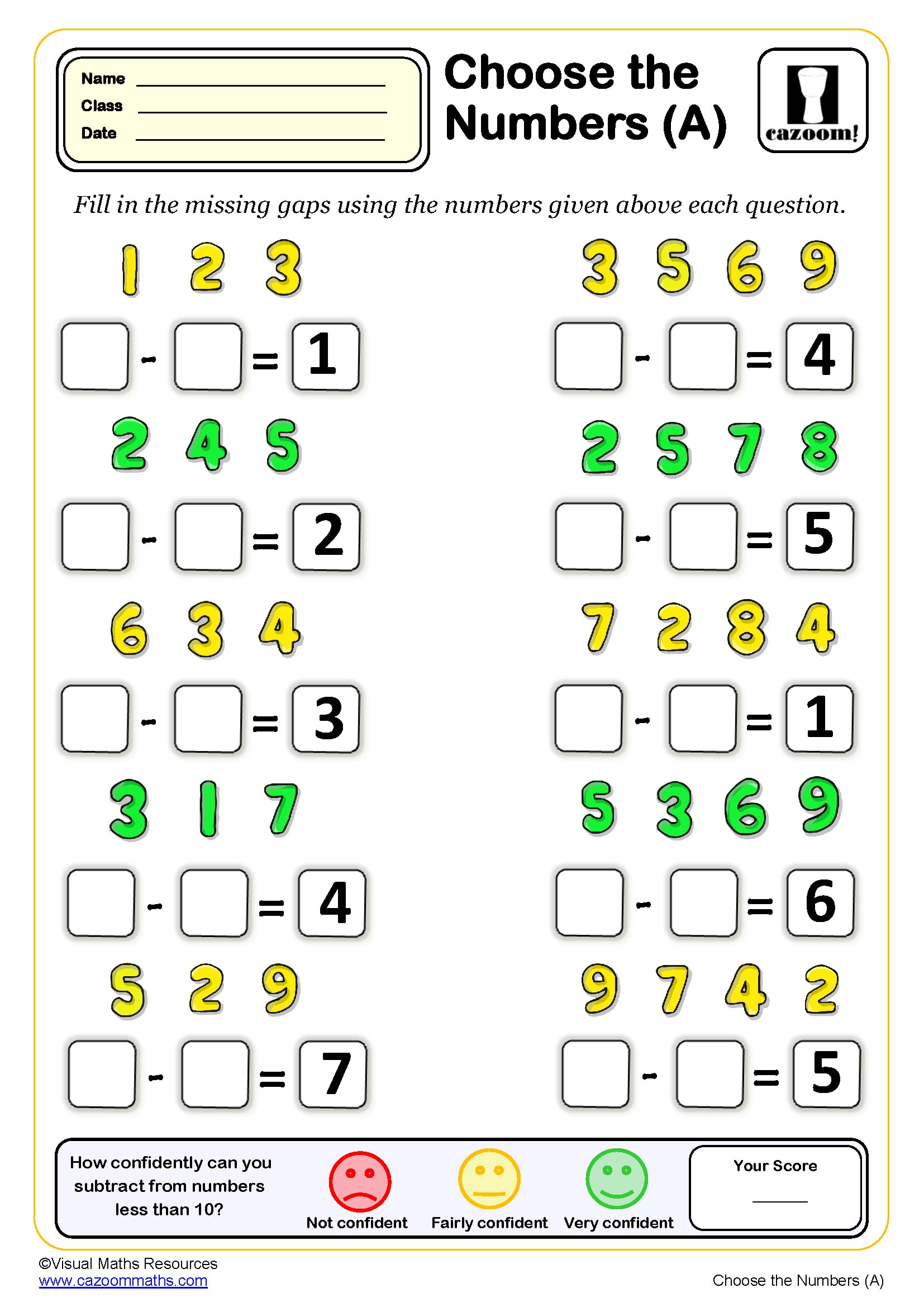
Choose the Numbers (B)
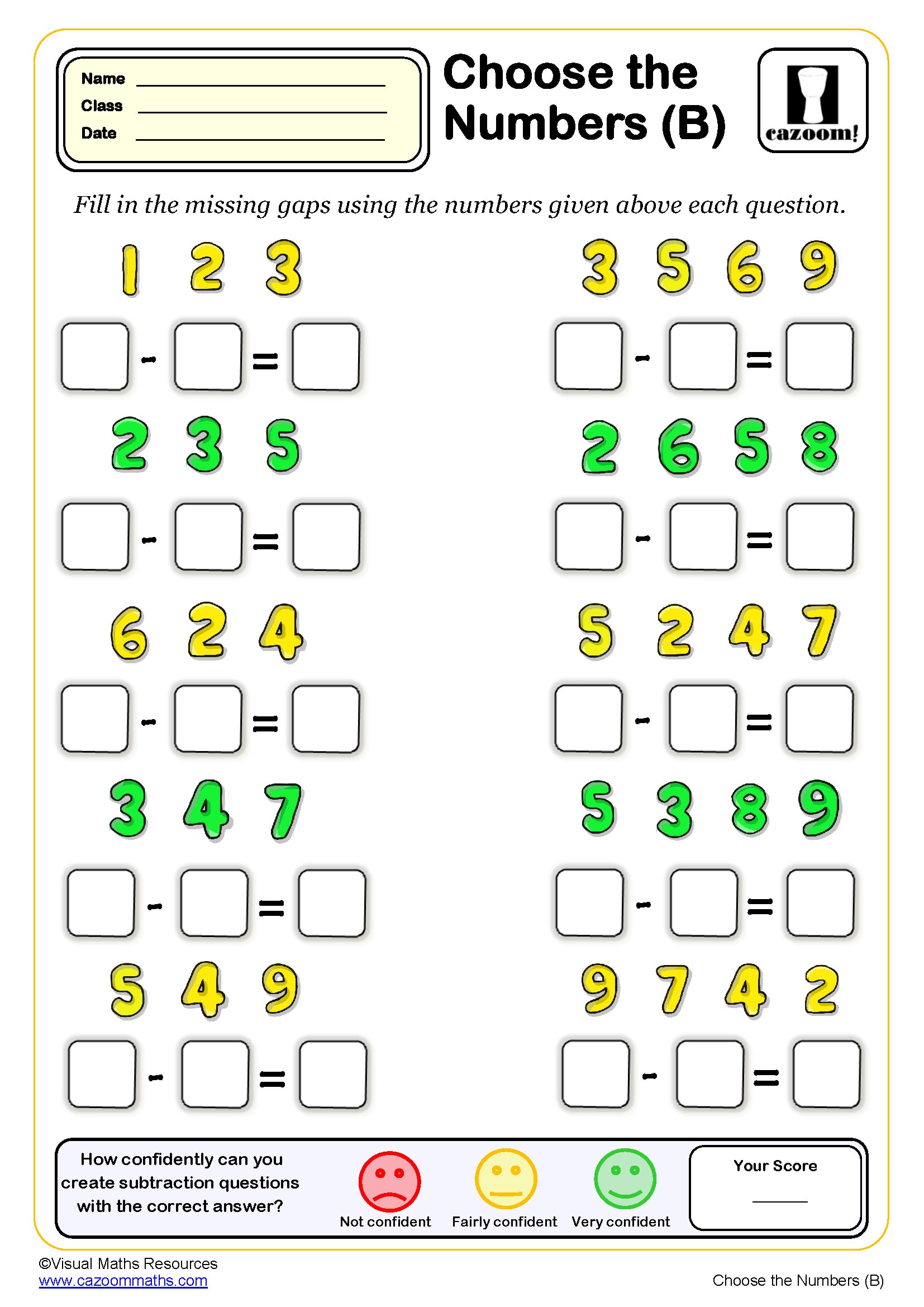
Match the Answers (B)
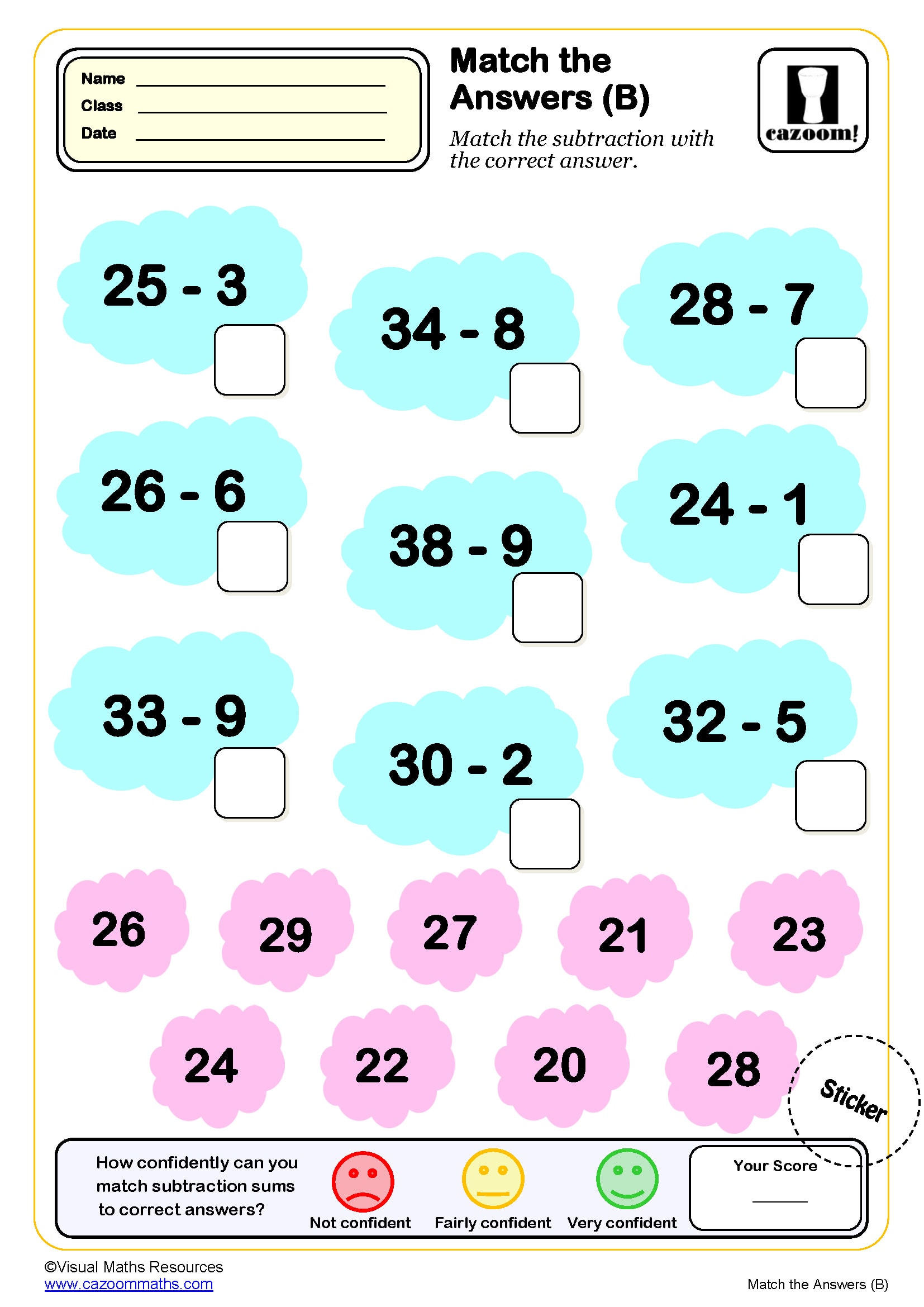
Match the Answers (C)
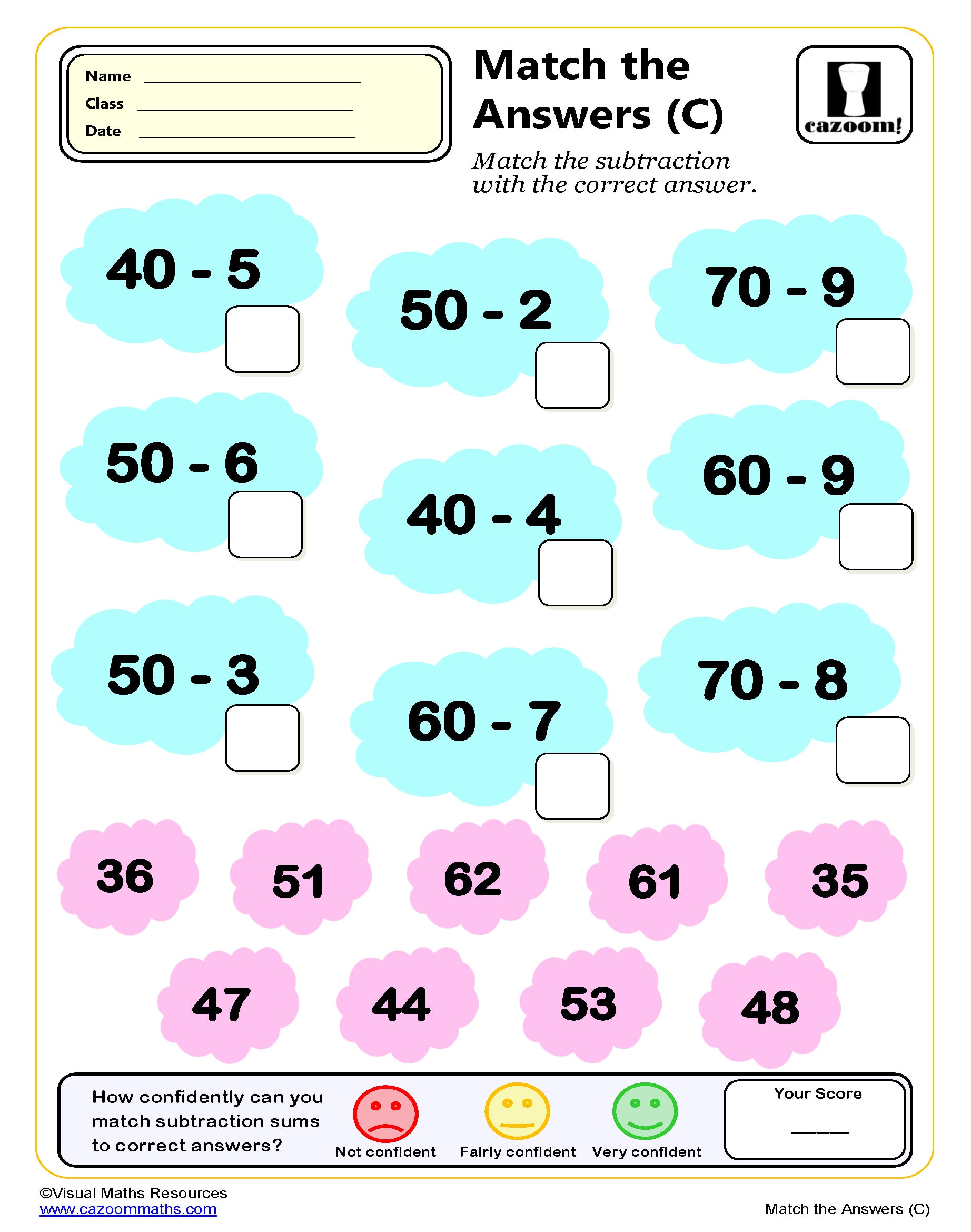
Match the Answers (D)
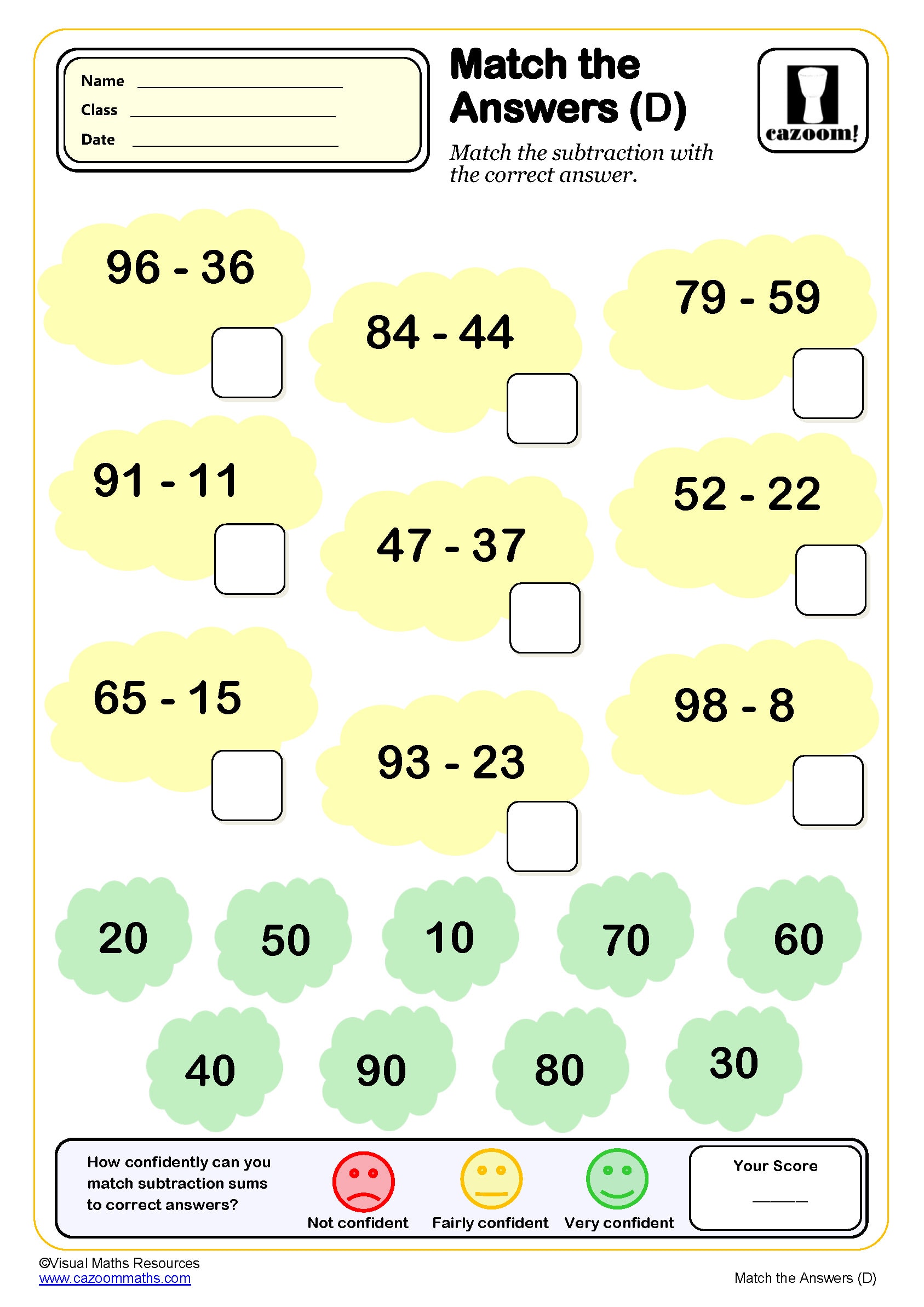
Subtracting from Multiples of 10 (A)
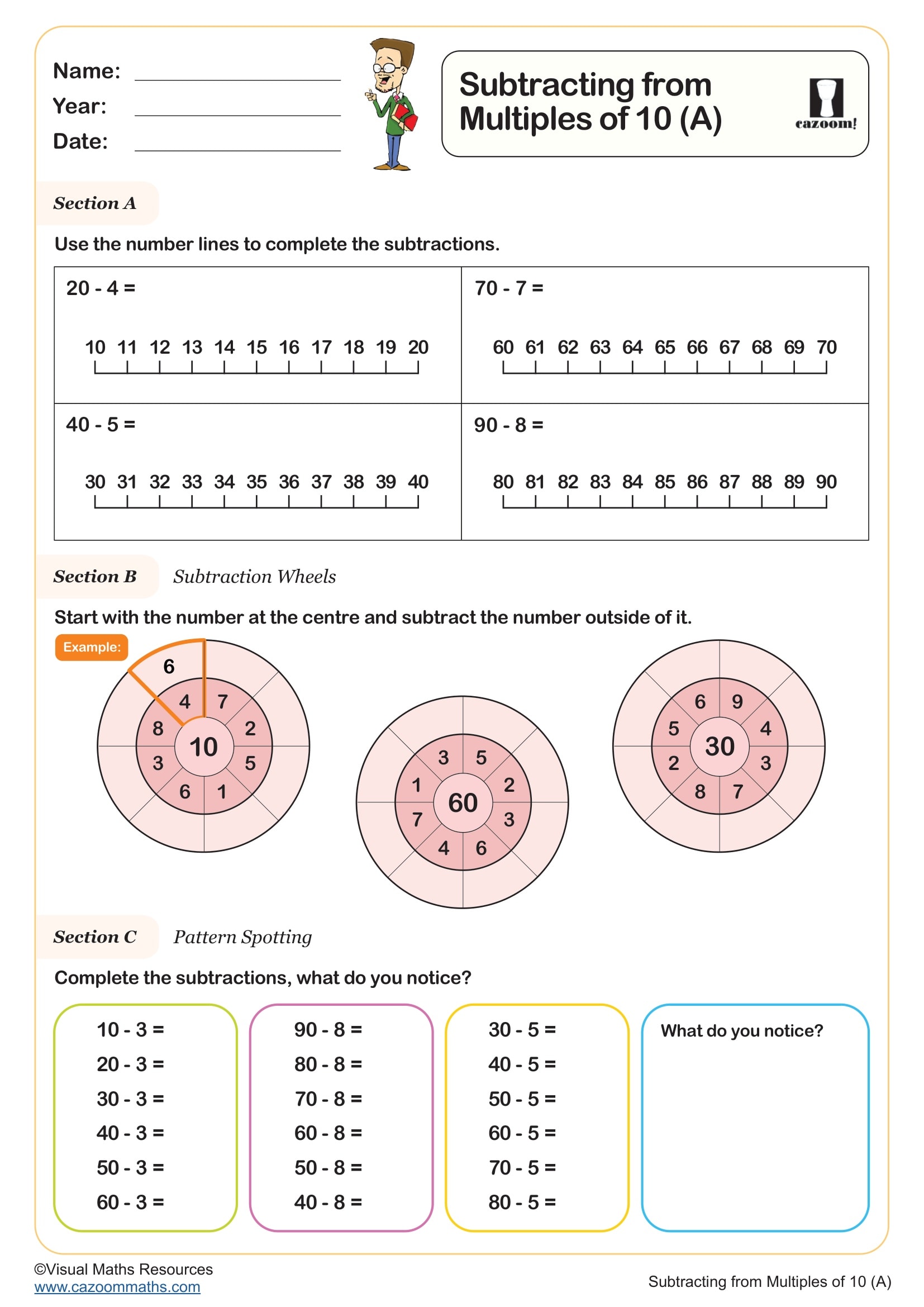
Subtracting Single Digits from Two Digit Numbers (Using Number Lines)
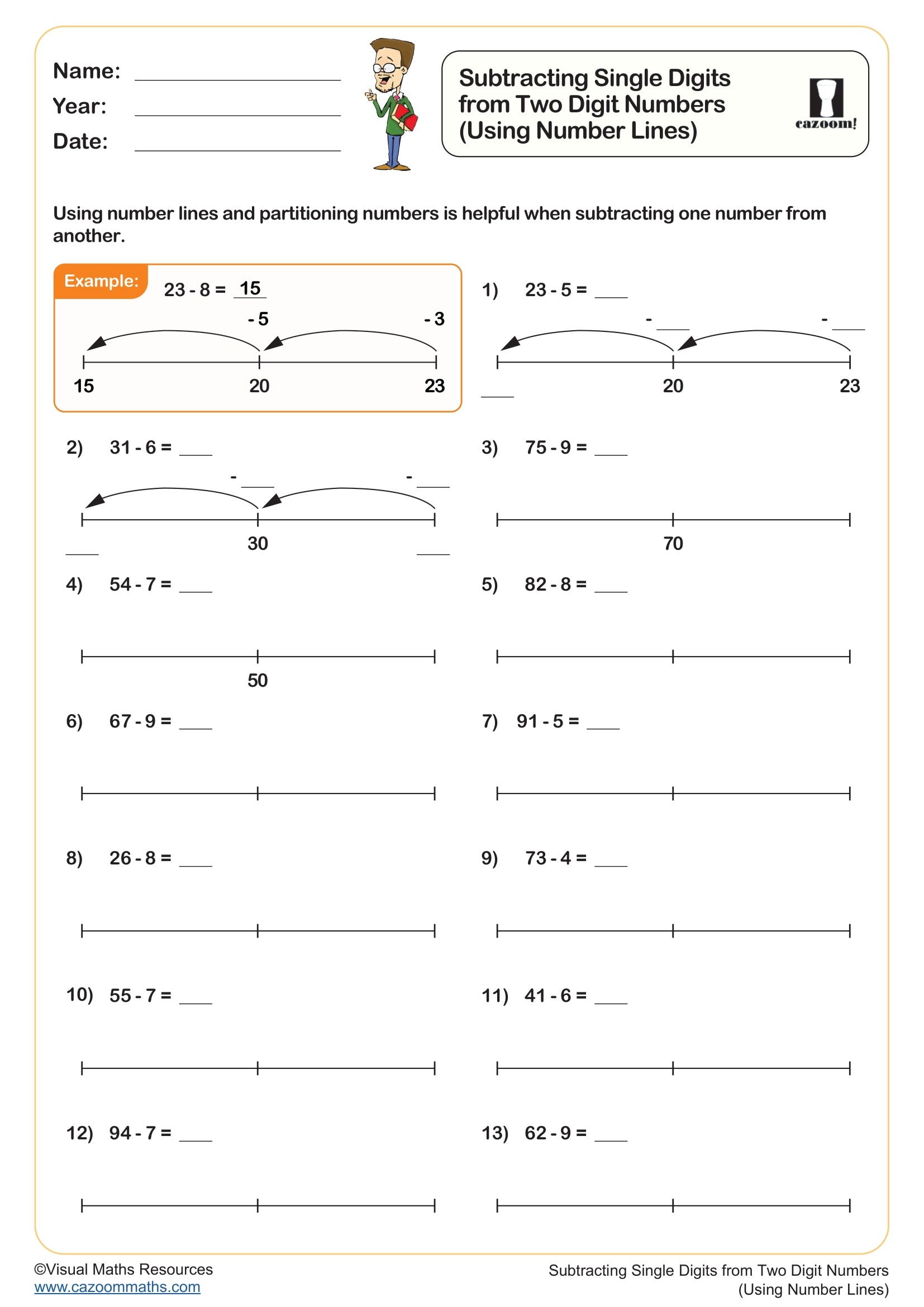
Taking Away 1 Digit from 2 Digits (A)

Taking Away 1 Digit from 2 Digits (B)
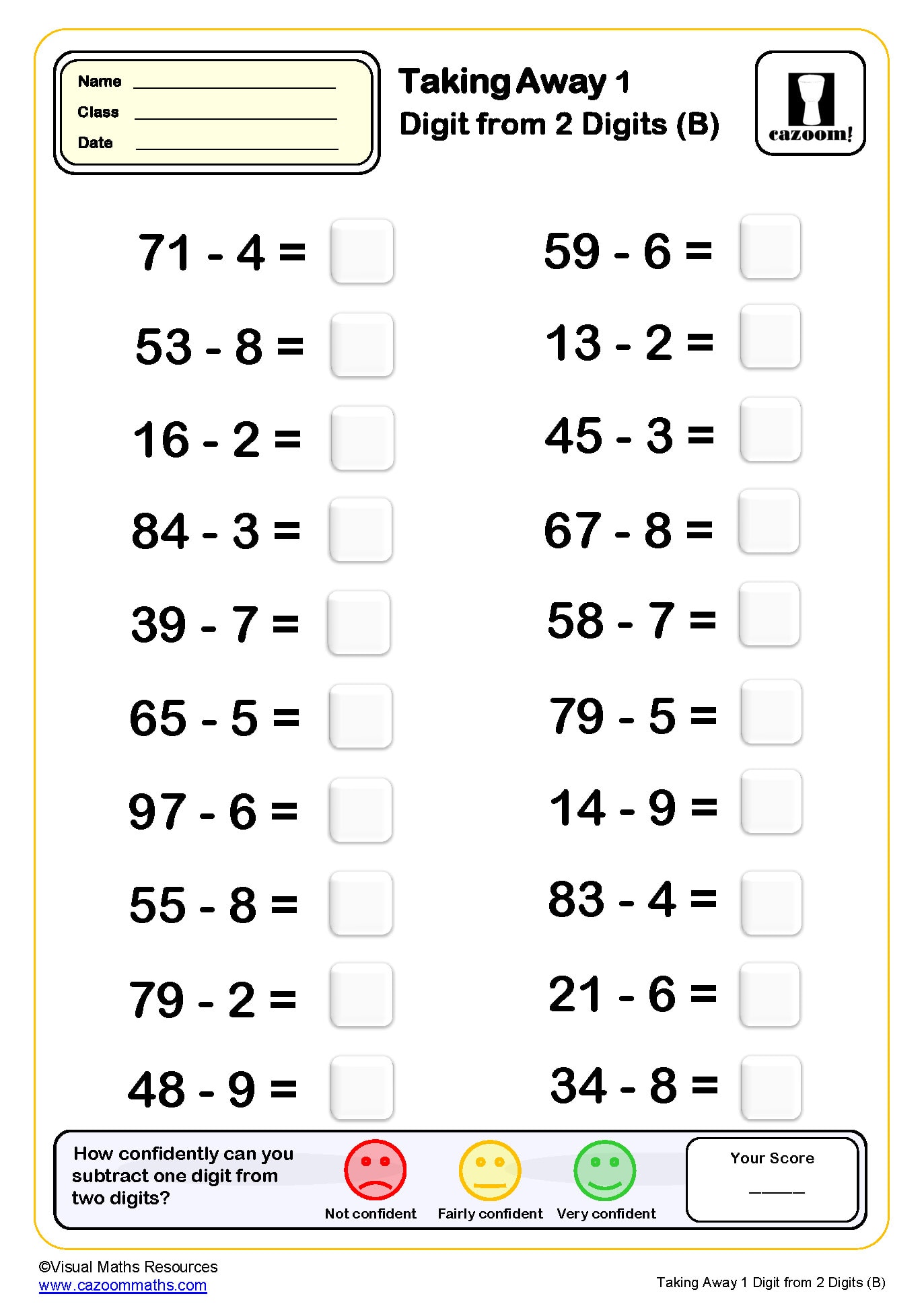
Taking Away 1 Digit from 2 Digits (C)
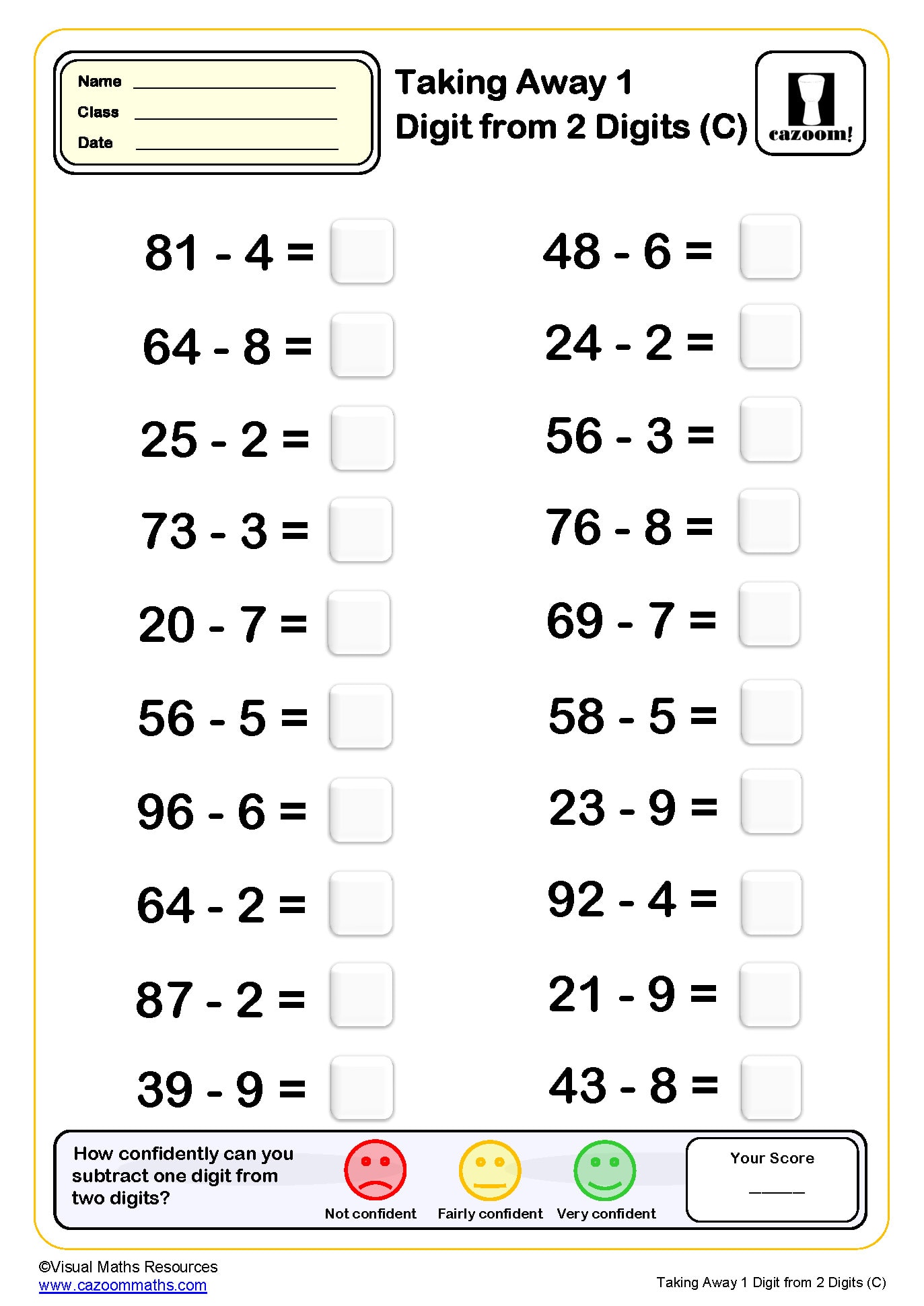
Taking Away 3 from Two Digit Numbers (10 questions)
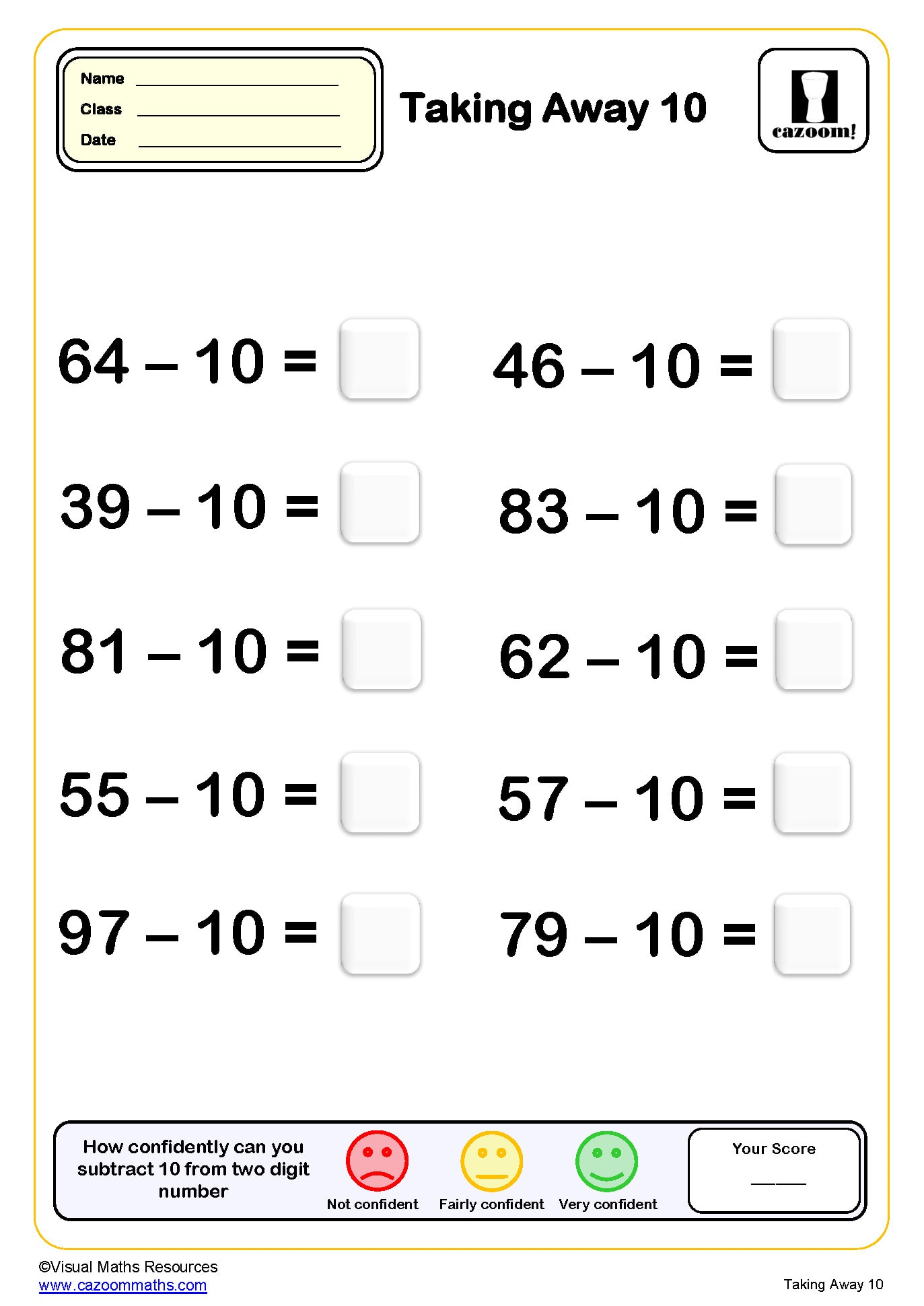
Taking Away 3 from Two Digit Numbers (20 questions)
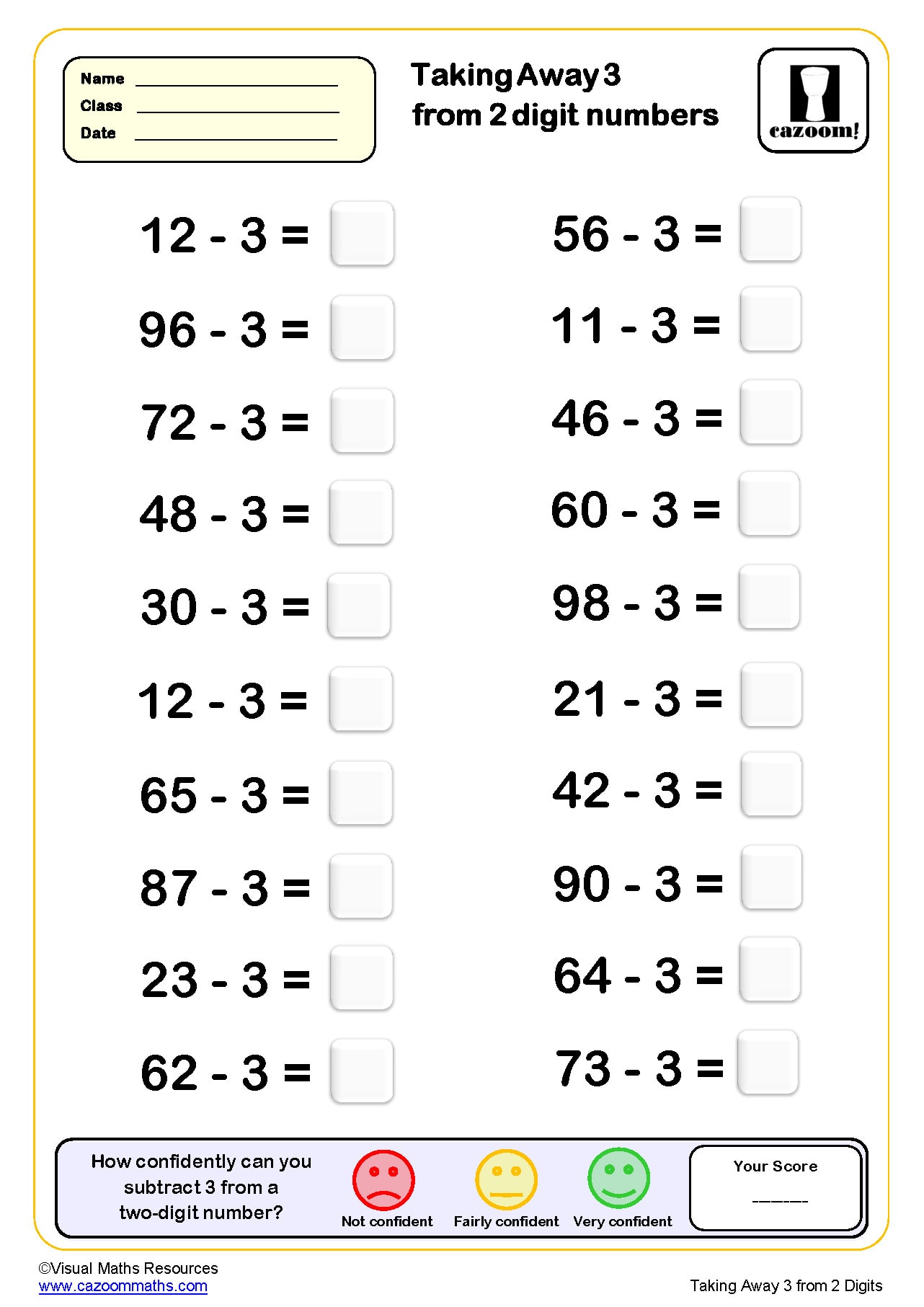
Taking Away 3 from Two Digit Numbers (50 questions)
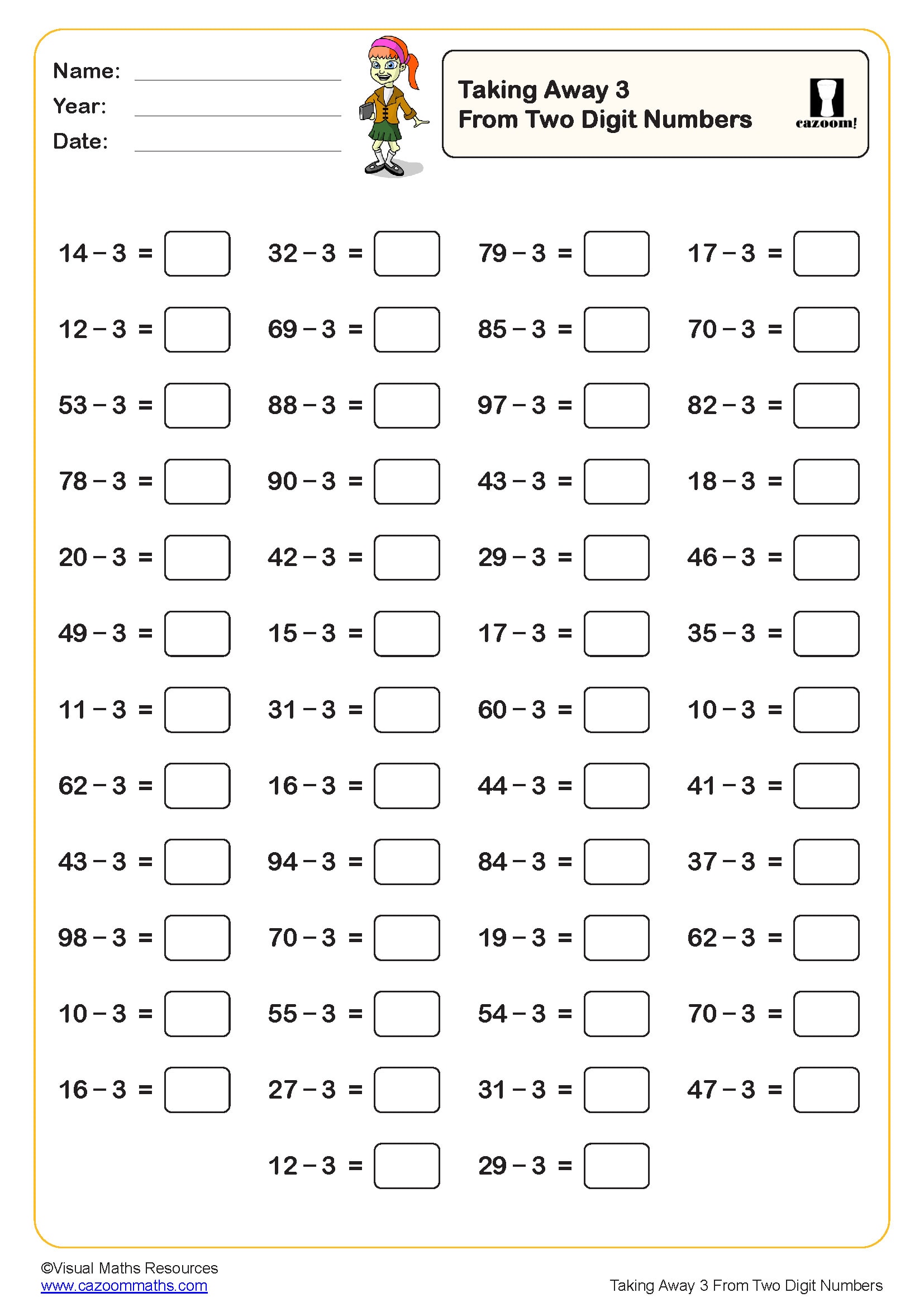
Taking Away 4 from Two Digit Numbers (10 questions)
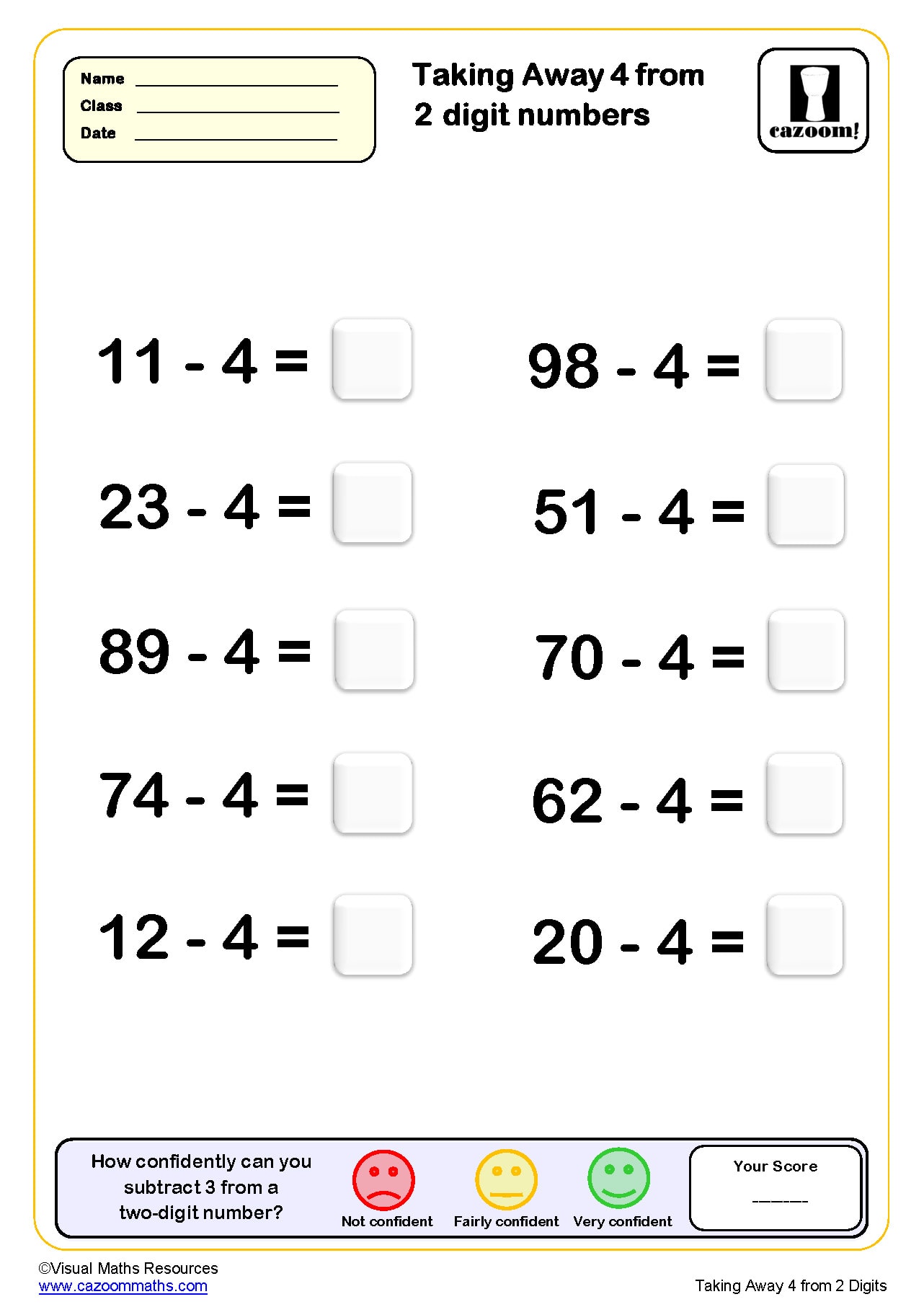
Taking Away 4 from Two Digit Numbers (20 questions)
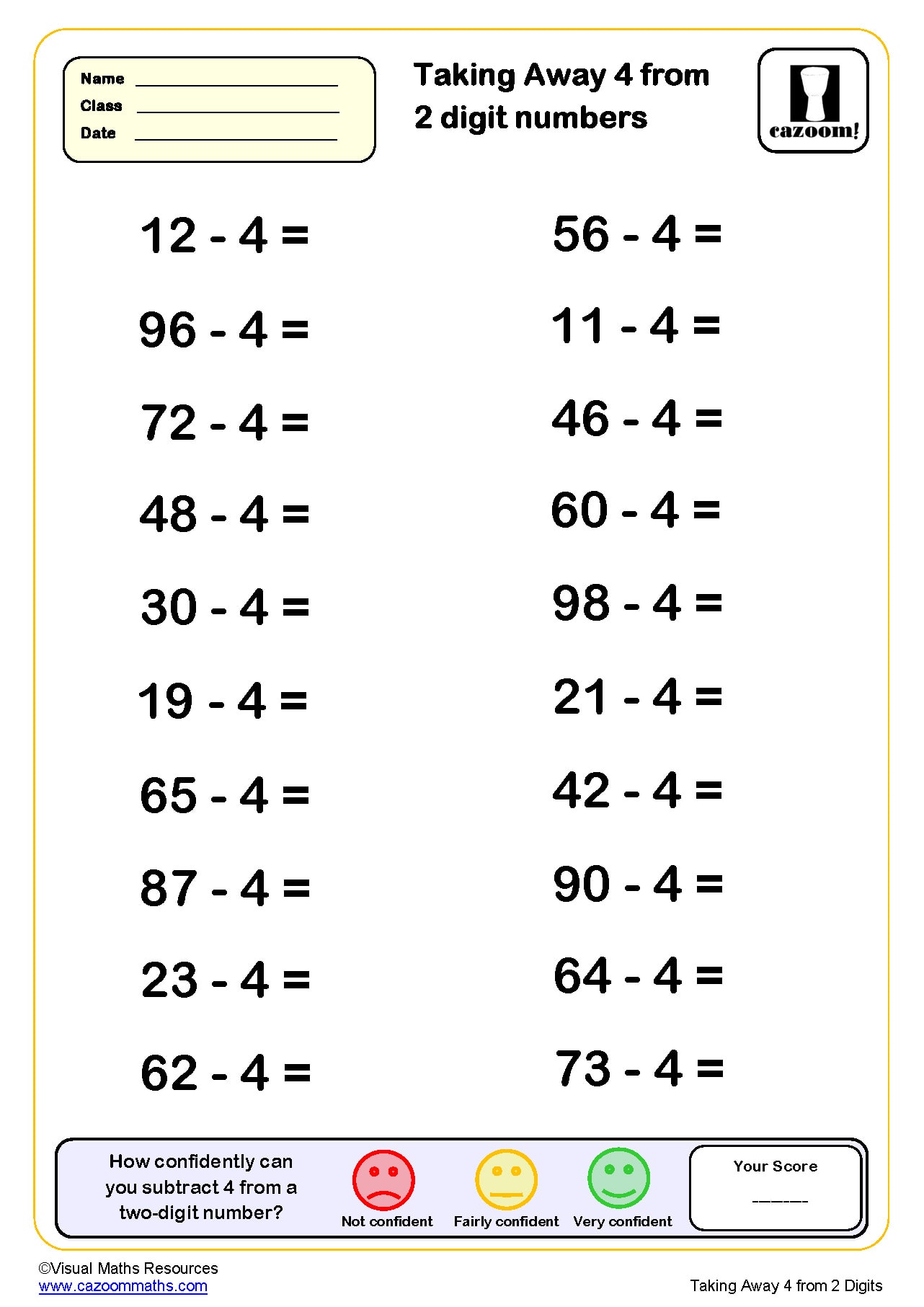
Taking Away 4 from Two Digit Numbers (50 questions)
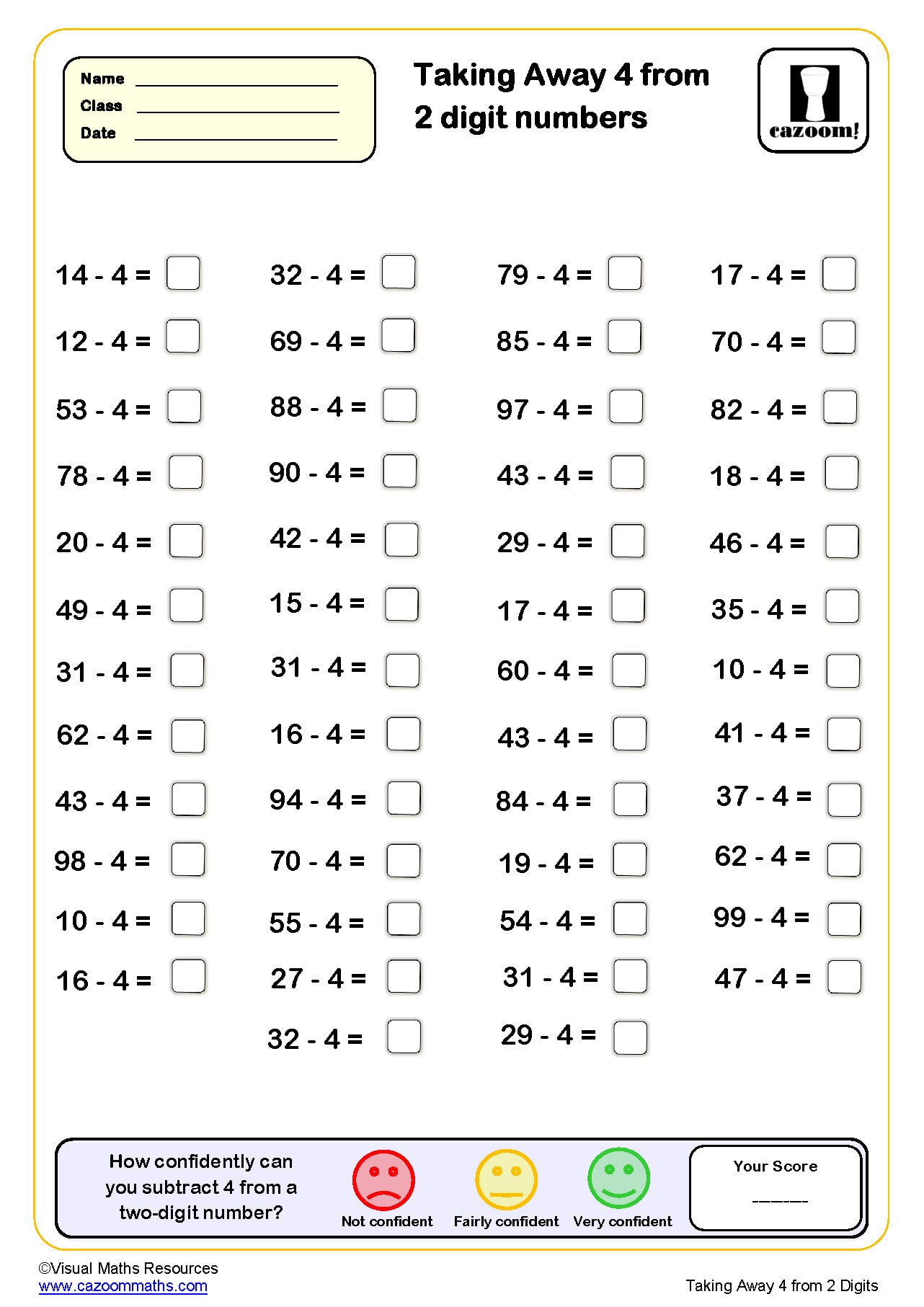
Taking Away 5 from Two Digit Numbers (10 questions)
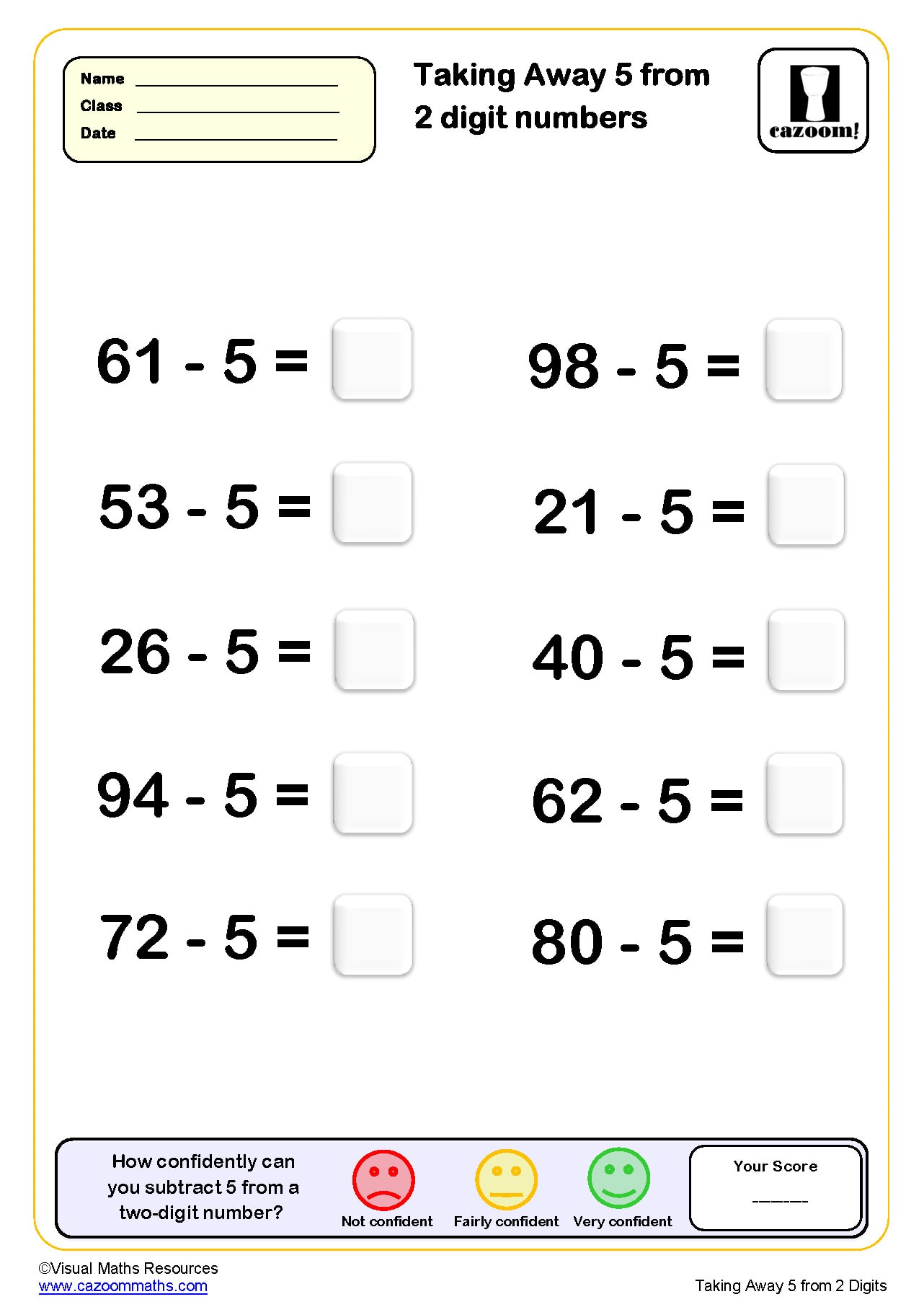
Taking Away 5 from Two Digit Numbers (20 questions)
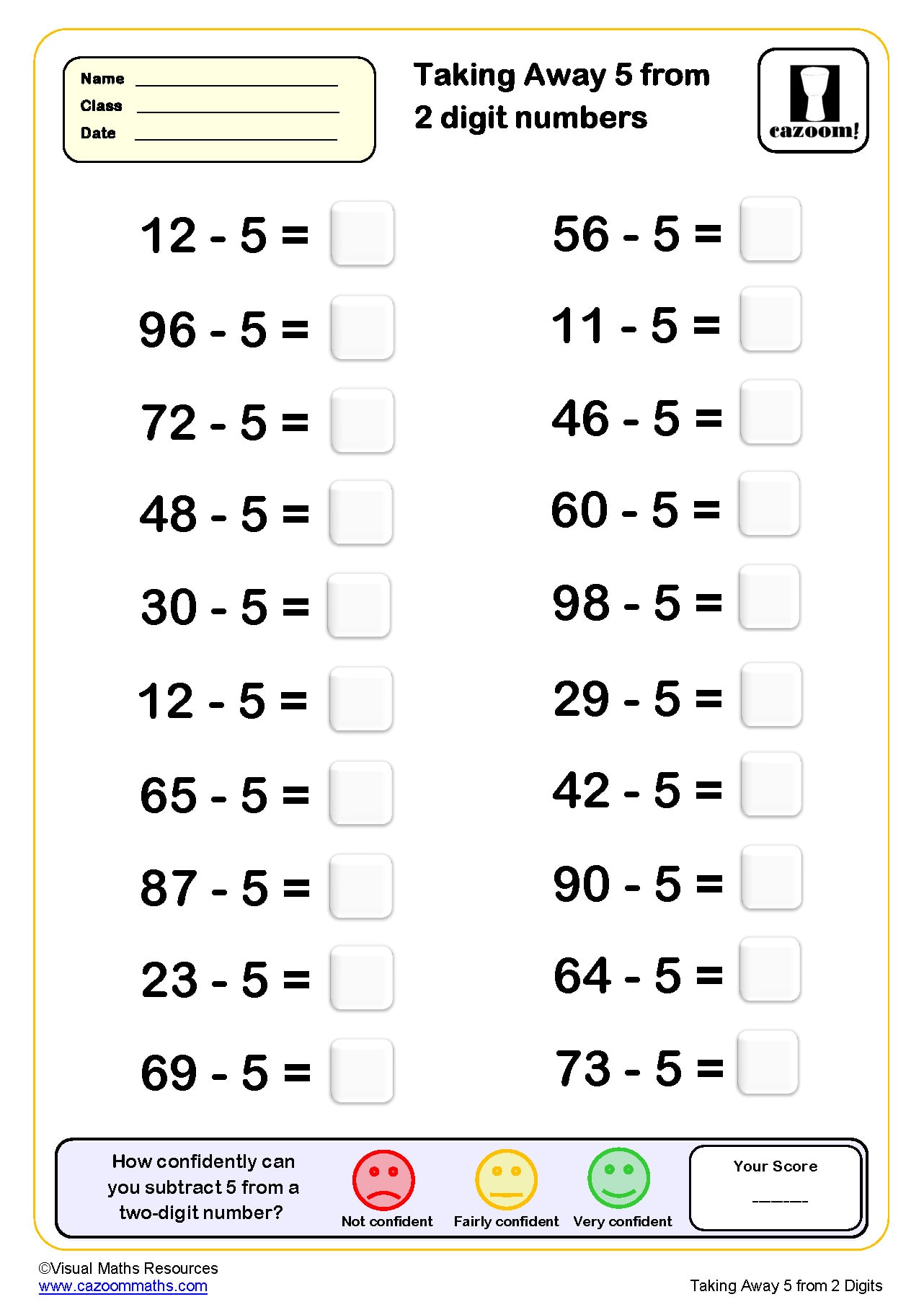
Taking Away 5 from Two Digit Numbers (50 questions)
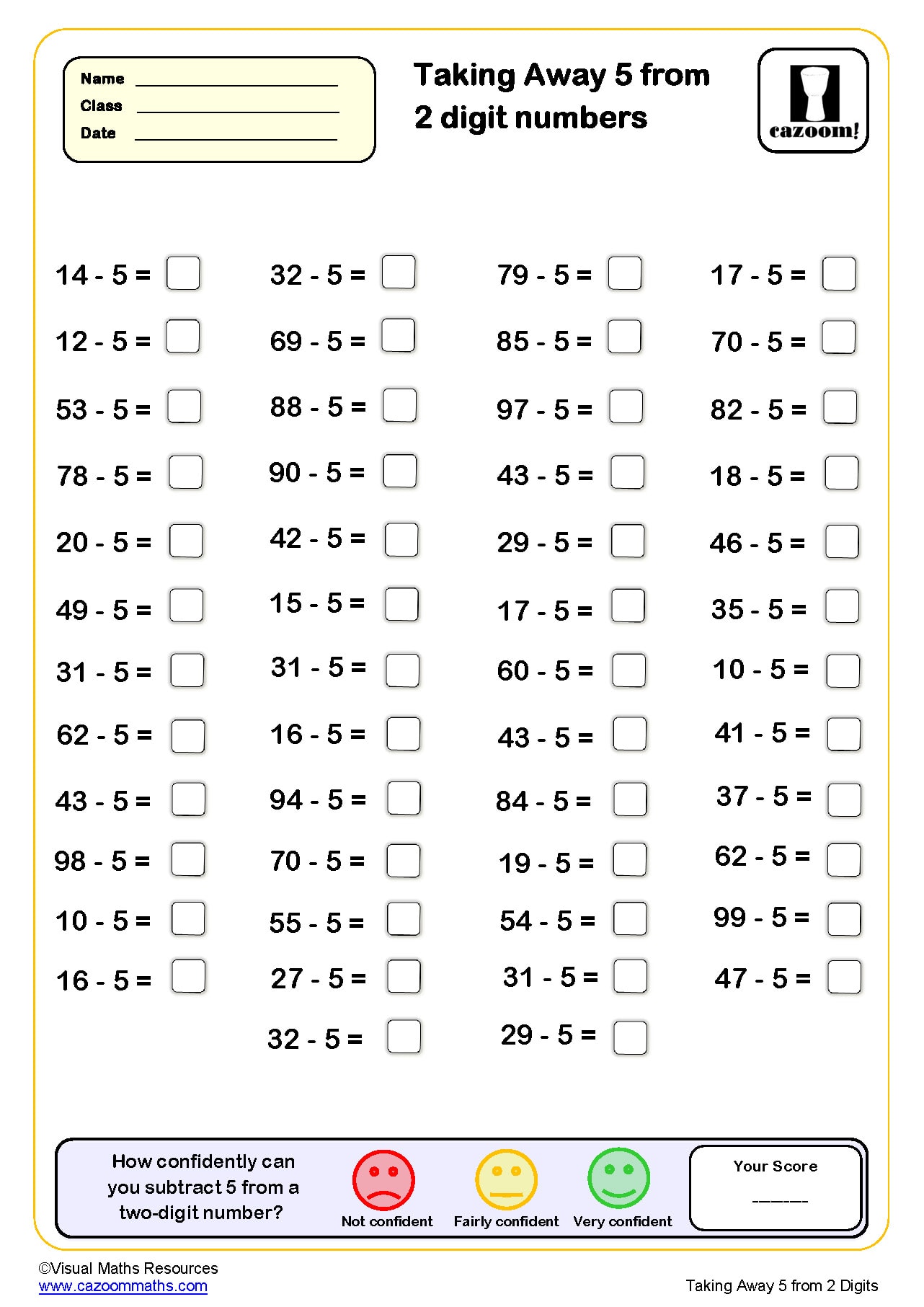
Best Single Digit Subtraction Worksheets PDF Downloads for Year 2 Practice
These math subtraction worksheets strike the perfect balance while learning basic number maths. Each worksheet is created in ready-to-use, printable PDF format and focuses on building confidence with numbers 0-10, using visual aids and step-by-step thinking processes. Our detailed solutions that come as a separate answer sheet show the working behind every subtraction problem, helping students understand the 'why' behind each answer.
What Makes Cazoom Maths Single-Digit Subtraction Worksheets Different?
Subtraction is simply taking away or removing some items from a group to see how many are left, such as eating 3 biscuits from a packet of 10 and counting what remains. It's the opposite of addition, where instead of putting more things together, we are finding out what's left after some have been removed.
We have packed quite a lot into these basic subtraction worksheets! Students start with concrete subtraction using pictures and objects, then progress to number lines and mental strategies. The worksheets include crossing-out activities, missing number problems, and real-world subtraction scenarios. Each sheet builds systematically from simple take-away problems to more complex subtraction within 20.
Why KS1 Students Need Regular Single-Digit Subtraction Practice
Here's what we have noticed after years in KS1 classrooms – students who master single-digit subtraction early become confident mathematicians later. Regular practice with these printable subtraction worksheets builds automatic recall and number sense. This foundation becomes crucial for future topics, such as two-digit subtraction, addition of bonds, and problem-solving skills.
• Builds mental math confidence for quick recall in lessons
• Develops number bond understanding essential for KS1-KS2 success
• Strengthens counting backwards skills used across the curriculum
• Prepares students for formal written methods introduced in Year 3
• Supports SAT preparation with varied question formats
When Do Children Actually Use Subtraction Skills?
Your young pupils are already subtraction experts without realising it! Watch any playground at break time and you'll see subtraction everywhere: working out how many turns are left on the climbing frame, figuring out who still needs a go with the football, or counting down the minutes until they have to line up. The best part? That moment when they suddenly connect their worksheet learning with real life – pure magic.
• Pocket money adventures – working out how much they've got left after buying sweets (always the most popular example!)
• Bedtime negotiations – "If it's 7 o'clock now, how many more minutes until 7:30?"
• Sharing snacks fairly – dividing up biscuits and calculating what's left over
• Cooking with grown-ups – taking ingredients out of the cupboard and seeing what remains
• Craft activities – counting stickers used and figuring out how many are left in the pack
• Garden games – keeping track of points scored and how many more are needed to win